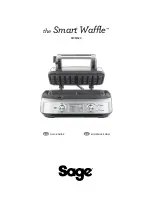
9
46.
Don’t use the timer with a recipe containing fresh milk, yoghurt, cheese, eggs,
fruit, onions, or anything else that might go off if left for a few hours in a warm
moist environment.
47. It’s a great convenience, and it’s really nice to come home to the smell of freshly
cooked bread, but, like most things, there’s a downside:
a)
Leaving the ingredients together for an extended period will inevitably
cause some interaction, especially on a hot or humid day
b)
The results probably won’t be quite as good as bread made right away
c)
The bread will still be nice, but it’ll be “good”, rather than “great”
48. Here’s how:
a) Carry out the instructions up to point 42 (page 8)
b) Don’t use fruit, or anything moist – you’ll speed up the interaction.
c) If your recipe uses nuts or raisins, add them after the flour.
d) Decide when you want your bread to be ready, e.g. 6 p.m.
e) Check the time now, e.g. 7 a.m.
f) Work out the difference between the two times, e.g. 11 hours
g) Use the + and - buttons to change the time shown on the display from the
program time to the time you’ve just worked out (e.g. 11 hours).
h) Each press will decrease - or in the time displayed by 10 minutes
i) You can’t reduce the time to less than the program time.
j) The maximum time which can be shown on the display is 13 hours
k) When you’ve set the time, go to point 49 (press start/stop)
l) Go to work/shopping/whatever, and on your return, you’ll be welcomed
home by the aroma of freshly baked bread 7
Starting the breadmaker
49. When you’re happy with the settings, press the start/stop button.
a) The breadmaker will beep
b) The timer colon (:) flashes, to let you know the program is operating
c)
The timer starts counting down, to show the amount of time left
Is there nothing happening on program 3? – don’t worry
50. If you’re using the wholewheat program, you won’t hear any movement for about
30 minutes.










































